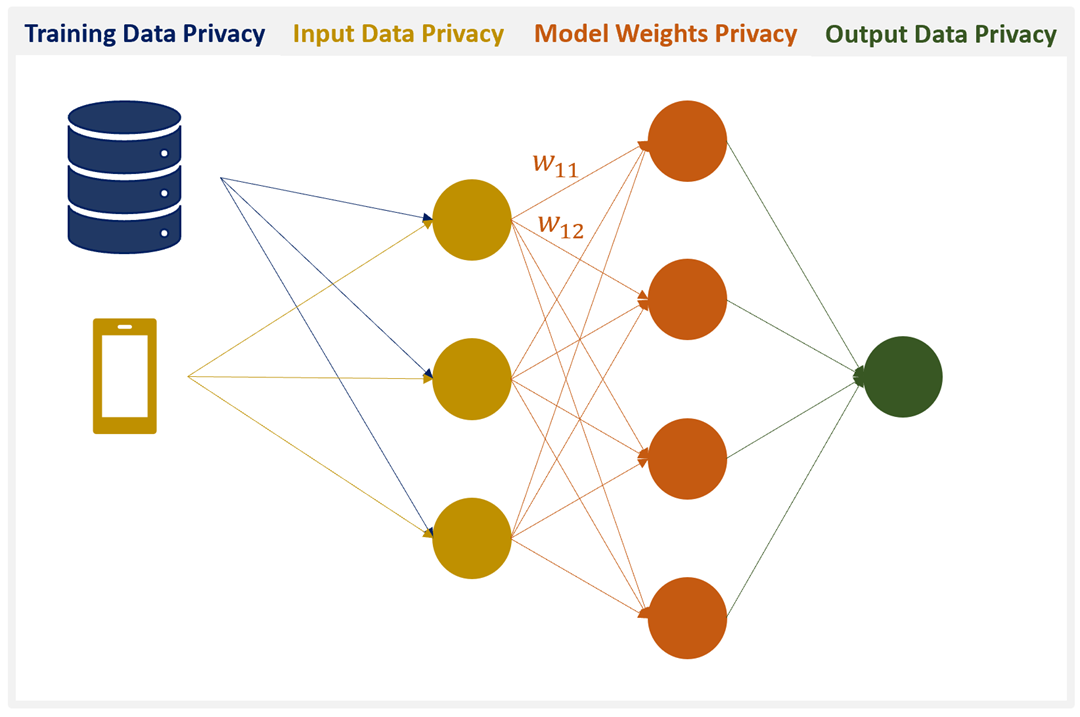
This article will explain how to deploy an AI nlp platform to analyze large unstructured datasets. It is important to understand the tone and voice of customers. For email responses or social media posts, you can learn how to make it work. You can then use it to analyze the tone of voice to tailor your responses to your customers' needs.
Analyzing language from large unstructured data set is possible by removing human error
Taking human error out of analyzing language in large unstructured data sets can be a daunting task. Fortunately, AI is proving that it is possible to process unstructured data to produce valuable insights. It is not easy to extract unstructured information, but there are tools on many analytical platforms that can help you do so. You should have a clear goal in mind before you begin to analyze unstructured information.

How to deploy an ai nlp Platform
An IT organization needs to adopt a platform capable of converting unstructured text into intelligence in order to reap the benefits from AI NLP. Deploying such a solution allows IT organizations to unleash employee productivity across the enterprise, freeing developers to focus on building applications instead of maintaining disparate technologies. In addition, the platform eliminates the ongoing rework of disparate technologies. You can ensure that your business reaps the benefits from AI NLP sooner and for a lower price by taking these steps.
Before you can deploy AI NLP platforms, you will need to first create your model. Choose regional or global endpoints for model versions. If you are using legacy machine models, choose global. This option is available for all machine types. Once you have your model ready, you can upload it to Google Cloud. Once your platform is ready, you can modify its interface to suit your company's needs.
It is used to analyze email and social media posts
Using AI NLP to analyze social media post or email messages is a promising technology that combines machine learning and artificial intelligence. NLP software is inspired by human neurons. It is capable of recognising words and their relation to one another. This technology can also identify non-standard grammar structures and tone. This technology can help businesses deliver relevant messages to customers. It can also increase the quality of written materials.
Businesses can detect negative phrases and words in their content by using AI NLP to analyse social media posts or email messages. Automated sentiment sorting, for example, can be used to identify negative phrases and words and filter them out from their source. Businesses can quickly respond to customer concerns by analysing negative words and phrases. In addition, NLP can detect any anomalies in text, such as malicious language. This technology allows organizations to better understand the intent of their customers and provide better customer service.

Importance of understanding the tone of a customer
When providing AI-based customer assistance, it is vital to fully understand the customer's tone. Based on the tone of the sentence, even the same sentence may have multiple interpretations. A phrase that is sarcastic can have a completely different meaning when it's spoken. It is also important to know the tone of your customer so that you can deliver the right conversation flow.
FAQ
AI: Why do we use it?
Artificial intelligence is an area of computer science that deals with the simulation of intelligent behavior for practical applications such as robotics, natural language processing, game playing, etc.
AI is also called machine learning. Machine learning is the study on how machines learn from their environment without any explicitly programmed rules.
There are two main reasons why AI is used:
-
To make our lives easier.
-
To be better than ourselves at doing things.
Self-driving car is an example of this. AI is able to take care of driving the car for us.
Where did AI get its start?
In 1950, Alan Turing proposed a test to determine if intelligent machines could be created. He suggested that machines would be considered intelligent if they could fool people into believing they were speaking to another human.
John McCarthy later took up the idea and wrote an essay titled "Can Machines Think?" in 1956. In it, he described the problems faced by AI researchers and outlined some possible solutions.
What is the role of AI?
An artificial neural network is composed of simple processors known as neurons. Each neuron takes inputs from other neurons, and then uses mathematical operations to process them.
Neurons are organized in layers. Each layer performs a different function. The first layer receives raw data like sounds, images, etc. It then sends these data to the next layers, which process them further. The final layer then produces an output.
Each neuron also has a weighting number. This value is multiplied each time new input arrives to add it to the weighted total of all previous values. If the number is greater than zero then the neuron activates. It sends a signal to the next neuron telling them what to do.
This process repeats until the end of the network, where the final results are produced.
Are there any potential risks with AI?
You can be sure. There always will be. AI poses a significant threat for society as a whole, according to experts. Others argue that AI has many benefits and is essential to improving quality of human life.
AI's potential misuse is the biggest concern. The potential for AI to become too powerful could result in dangerous outcomes. This includes robot overlords and autonomous weapons.
AI could take over jobs. Many people worry that robots may replace workers. Others think artificial intelligence could let workers concentrate on other aspects.
For example, some economists predict that automation may increase productivity while decreasing unemployment.
What countries are the leaders in AI today?
China has more than $2B in annual revenue for Artificial Intelligence in 2018, and is leading the market. China's AI industry includes Baidu and Tencent Holdings Ltd. Tencent Holdings Ltd., Baidu Group Holding Ltd., Baidu Technology Inc., Huawei Technologies Co. Ltd. & Huawei Technologies Inc.
China's government is heavily involved in the development and deployment of AI. Many research centers have been set up by the Chinese government to improve AI capabilities. These include the National Laboratory of Pattern Recognition, the State Key Lab of Virtual Reality Technology and Systems, and the State Key Laboratory of Software Development Environment.
China is home to many of the biggest companies around the globe, such as Baidu, Tencent, Tencent, Baidu, and Xiaomi. All of these companies are working hard to create their own AI solutions.
India is another country that is making significant progress in the development of AI and related technologies. India's government is currently working to develop an AI ecosystem.
What are the advantages of AI?
Artificial Intelligence (AI) is a new technology that could revolutionize our lives. It is revolutionizing healthcare, finance, and other industries. It's predicted that it will have profound effects on everything, from education to government services, by 2025.
AI is being used already to solve problems in the areas of medicine, transportation, energy security, manufacturing, and transport. The possibilities are endless as more applications are developed.
What makes it unique? Well, for starters, it learns. Computers learn by themselves, unlike humans. Instead of teaching them, they simply observe patterns in the world and then apply those learned skills when needed.
It's this ability to learn quickly that sets AI apart from traditional software. Computers can quickly read millions of pages each second. They can recognize faces and translate languages quickly.
Artificial intelligence doesn't need to be manipulated by humans, so it can do tasks much faster than human beings. It can even perform better than us in some situations.
Researchers created the chatbot Eugene Goostman in 2017. Numerous people were fooled by the bot into believing that it was Vladimir Putin.
This shows that AI can be extremely convincing. AI's ability to adapt is another benefit. It can also be trained to perform tasks quickly and efficiently.
This means businesses don't need large investments in expensive IT infrastructures or to hire large numbers.
Statistics
- According to the company's website, more than 800 financial firms use AlphaSense, including some Fortune 500 corporations. (builtin.com)
- In the first half of 2017, the company discovered and banned 300,000 terrorist-linked accounts, 95 percent of which were found by non-human, artificially intelligent machines. (builtin.com)
- Additionally, keeping in mind the current crisis, the AI is designed in a manner where it reduces the carbon footprint by 20-40%. (analyticsinsight.net)
- The company's AI team trained an image recognition model to 85 percent accuracy using billions of public Instagram photos tagged with hashtags. (builtin.com)
- While all of it is still what seems like a far way off, the future of this technology presents a Catch-22, able to solve the world's problems and likely to power all the A.I. systems on earth, but also incredibly dangerous in the wrong hands. (forbes.com)
External Links
How To
How to create Google Home
Google Home, a digital assistant powered with artificial intelligence, is called Google Home. It uses advanced algorithms and natural language processing for answers to your questions. Google Assistant lets you do everything: search the web, set timers, create reminds, and then have those reminders sent to your mobile phone.
Google Home can be integrated seamlessly with Android phones. Connecting an iPhone or iPad to Google Home over WiFi will allow you to take advantage features such as Apple Pay, Siri Shortcuts, third-party applications, and other Google Home features.
Google Home, like all Google products, comes with many useful features. It will also learn your routines, and it will remember what to do. You don't have to tell it how to adjust the temperature or turn on the lights when you get up in the morning. Instead, you can simply say "Hey Google" and let it know what you'd like done.
These are the steps you need to follow in order to set up Google Home.
-
Turn on Google Home.
-
Press and hold the Action button on top of your Google Home.
-
The Setup Wizard appears.
-
Select Continue.
-
Enter your email adress and password.
-
Register Now
-
Google Home is now available